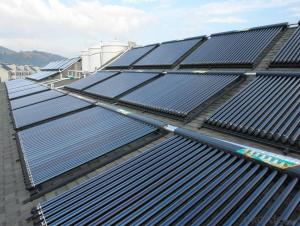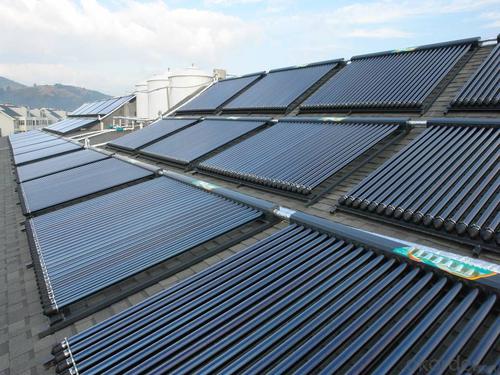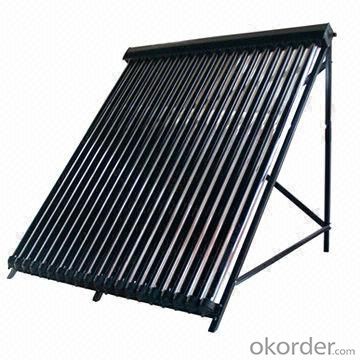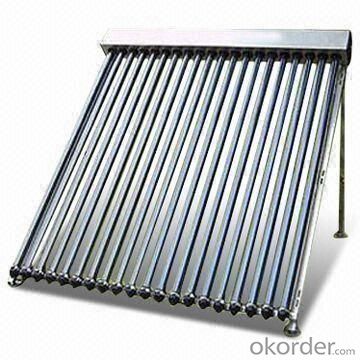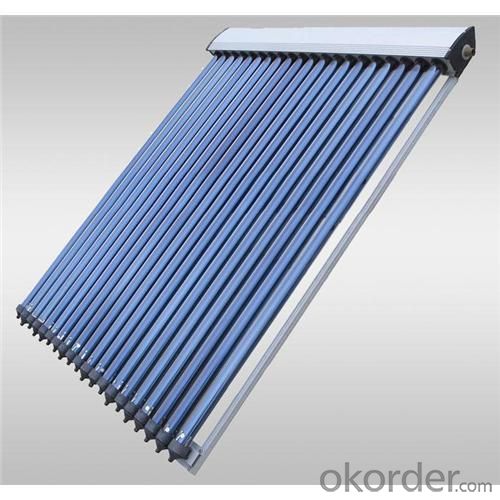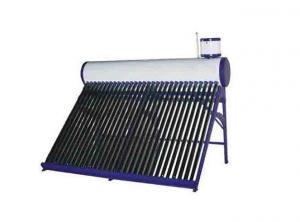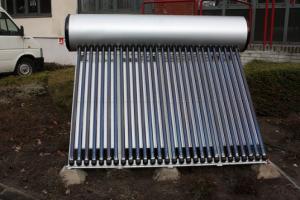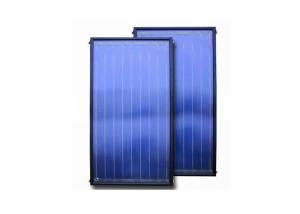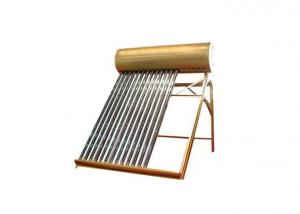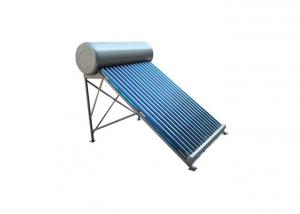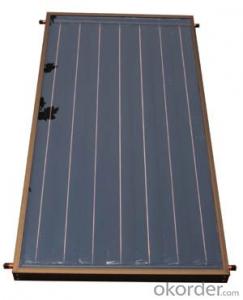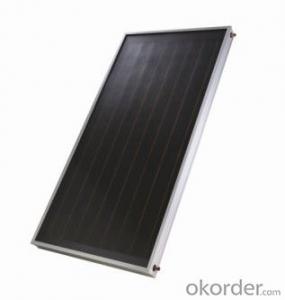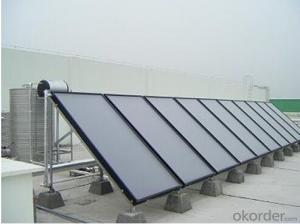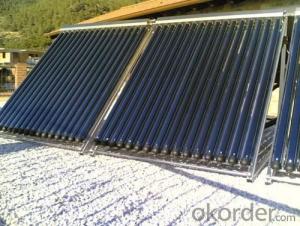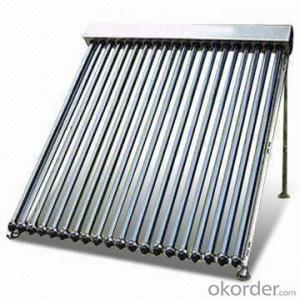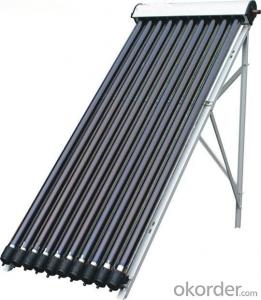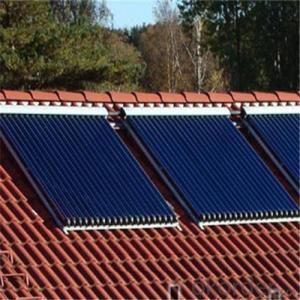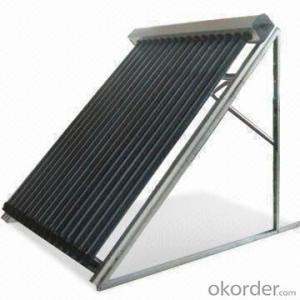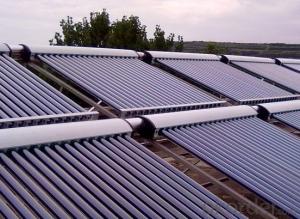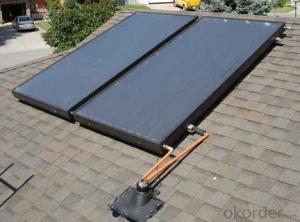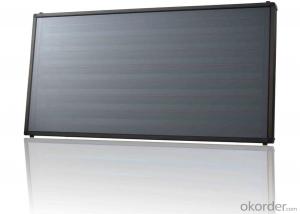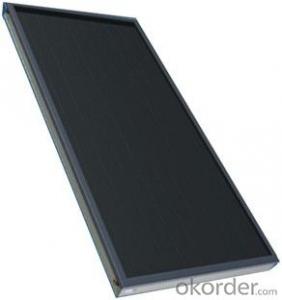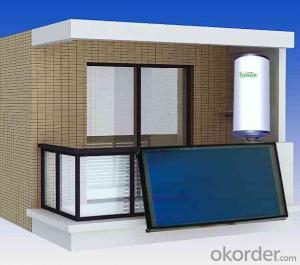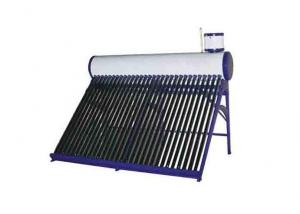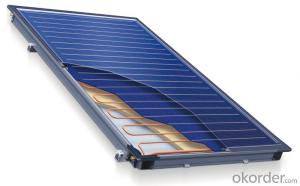Viessmann Evacuated Tube Solar Collectors - Heat Pipes for Rooftop, Made in China
- Loading Port:
- China main port
- Payment Terms:
- TT OR LC
- Min Order Qty:
- 5 set
- Supply Capability:
- 10000 set/month
OKorder Service Pledge
OKorder Financial Service
You Might Also Like
Specifications
manifold (inner) | red copper |
manifold (exterior) | aluminum alloy |
glass tube dimensions | 58mm * 1800mm |
daily efficiency | ≥55% |
heat preservation | 72 hours |
hail resistance | 25mm |
max pressure | 7 bar |
coating of vacuum tube | ALN/AIN-SS/CU |
heat pipe | anti-freezing > -35 degree |
certificate | Solar Keymark, EN12975,SRCC |
Serious Product
Models | L*W*H mm | Vacuum tube | Power output | Efficiency | Header mm | Frame | container loading 20FT/40HQ sets | Gross Weight kg |
SHC-8 | 1917*910*133 | 58*1800*8pcs | 939W | 0.668 | Φ35/1.0 | AL alloy | 185/445 | 27 |
SHC-10 | 1917*1130*133 | 58*1800*10pcs | 1189W | 159/385 | 33 | |||
SHC-12 | 1917*1350*133 | 58*1800*12pcs | 1440W | 149/358 | 40 | |||
SHC-15 | 1917*1680*133 | 58*1800*15pcs | 1815W | 120/290 | 49 | |||
SHC-18 | 1917*2010*133 | 58*1800*18pcs | 2191W | 100/242 | 59 | |||
SHC-20 | 1917*2230*133 | 58*1800*20pcs | 2442W | 87/210 | 66 | |||
SHC-22 | 1917*2450*133 | 58*1800*22pcs | 2692W | 83/202 | 72 | |||
SHC-24 | 1917*2670*133 | 58*1800*24pcs | 2943W | 77/188 | 79 |
Packaging & Delivery
Packaging Details: | Exporting Carton with big foaming protection |
Delivery Detail: | In 10-15 days |
Loading Quantity
Model | Tube | Tube Q.T.Y | Loading Q.T.Y/40HQ |
GSC15 | 58*1800mm | 15pcs | 315sets |
GSC18 | 58*1800mm | 18pcs | 265sets |
GSC20 | 58*1800mm | 20pcs | 248sets |
GSC22 | 58*1800mm | 22pcs | 225sets |
GSC25 | 58*1800mm | 25pcs | 200sets |
GSC30 | 58*1800mm | 30pcs | 168sets |
Principle of solar collector:
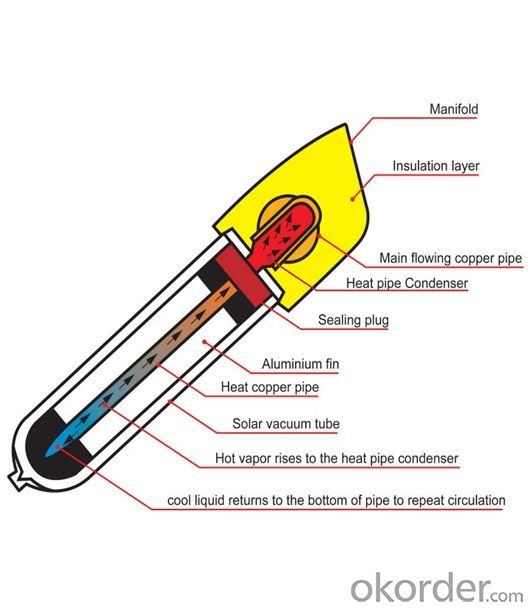
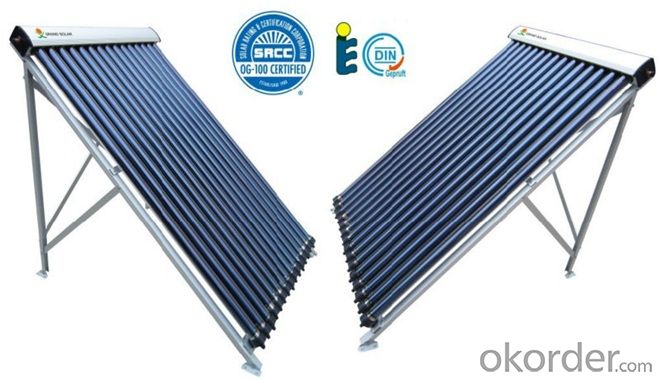
Solar collector details
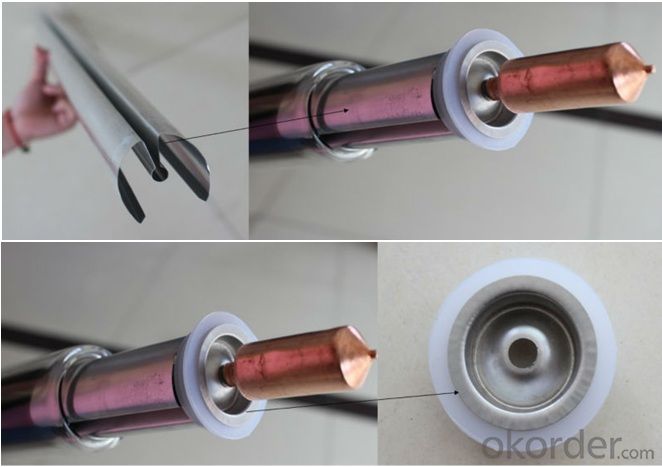
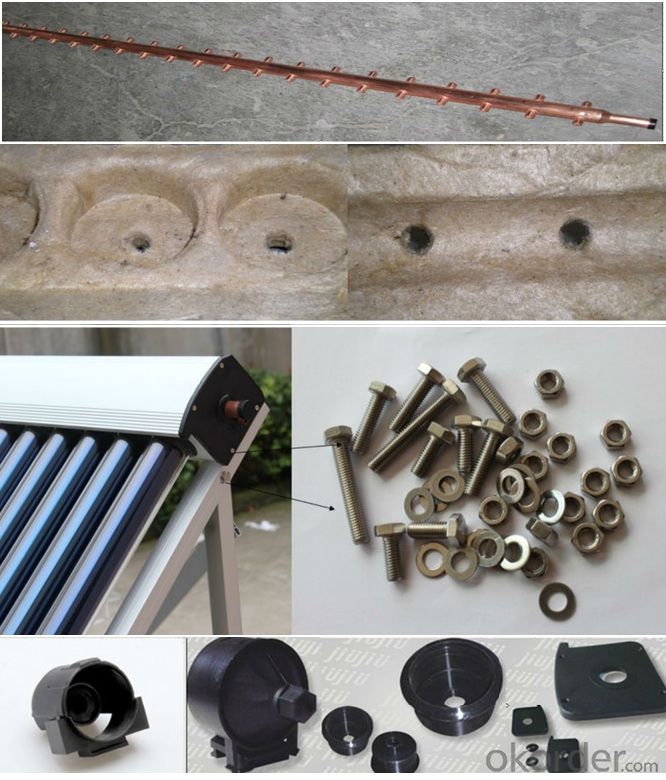
- Q: Can solar collectors be used in solar farms?
- Yes, solar collectors can be used in solar farms. Solar farms typically consist of a large number of solar panels or collectors that convert sunlight into electricity. These collectors are strategically positioned to capture maximum sunlight and generate renewable energy on a larger scale.
- Q: Can solar collectors be used for heating religious buildings?
- Yes, solar collectors can be used for heating religious buildings. Solar thermal systems can be installed on the roofs of religious buildings to harness the sun's energy and convert it into heat. This heat can then be used for space heating, water heating, or both, reducing the reliance on traditional heating methods and resulting in cost savings and environmental benefits.
- Q: Can solar collectors be used for heating car storage facilities?
- Yes, solar collectors can be used for heating car storage facilities. Solar collectors can harness the energy from the sun to generate heat, which can then be used to warm up car storage facilities. This renewable and sustainable method of heating can help reduce reliance on traditional energy sources and contribute to overall energy efficiency.
- Q: Can solar collectors be used for generating electricity on medical devices?
- Yes, solar collectors can be used for generating electricity on medical devices. Solar collectors, such as photovoltaic cells, can convert sunlight directly into electrical energy. This renewable energy source can be harnessed to power various medical devices, including portable monitors, defibrillators, ventilators, and even surgical equipment. By utilizing solar collectors, medical devices can become more independent and self-sustainable, particularly in remote areas with limited access to reliable electricity grids. Solar power also offers environmental benefits by reducing the reliance on fossil fuels and minimizing carbon emissions. However, it is important to consider the specific power requirements of each medical device and ensure that the solar collectors can generate sufficient electricity to meet those needs.
- Q: What is the role of a heat transfer fluid in a solar collector system?
- The role of a heat transfer fluid in a solar collector system is to absorb heat energy from the sun and transfer it to the desired location for use or storage. It circulates through the solar collector, absorbing heat from the sun's radiation, and then carries this thermal energy to a heat exchanger or storage tank. The heat transfer fluid must have high thermal conductivity, low freezing point, and good stability to effectively capture and transfer the solar energy.
- Q: Can solar collectors be used in areas with limited sunlight?
- Yes, solar collectors can still be used in areas with limited sunlight. While the amount of energy produced may be reduced compared to regions with abundant sunlight, solar collectors can still generate a significant amount of power in areas with limited sunlight. Additionally, advancements in solar technology, such as the use of more efficient solar panels and tracking systems, can further improve the energy output in such areas.
- Q: Can solar collectors be used in combination with greenhouses or indoor farming systems?
- Yes, solar collectors can definitely be used in combination with greenhouses or indoor farming systems. Solar collectors can provide a renewable and sustainable source of energy to power the various systems within greenhouses or indoor farming setups, such as lighting, heating, cooling, and irrigation. By harnessing solar energy, these systems can operate efficiently and reduce reliance on traditional energy sources, leading to increased sustainability and cost-effectiveness.
- Q: Can solar collectors be used for heating museums and art galleries?
- Yes, solar collectors can be used for heating museums and art galleries. Solar thermal systems can provide a sustainable and cost-effective solution for heating these spaces by utilizing the sun's energy to generate heat. This can help in maintaining optimal temperature and humidity levels, which are crucial for preserving sensitive artwork and artifacts.
- Q: Are there any corrosion concerns with solar collectors?
- Yes, there can be corrosion concerns with solar collectors. Corrosion can occur due to the exposure of the collector's metal components to the elements over time. Proper maintenance and use of corrosion-resistant materials can help mitigate this issue.
- Q: What is the principle of centralized solar water heater? pros and cons?
- passes through the solenoid valve or the collecting system circulating water pump under the control of the control system to run automatically, The hot water in the collector will be transferred to the
Send your message to us
Viessmann Evacuated Tube Solar Collectors - Heat Pipes for Rooftop, Made in China
- Loading Port:
- China main port
- Payment Terms:
- TT OR LC
- Min Order Qty:
- 5 set
- Supply Capability:
- 10000 set/month
OKorder Service Pledge
OKorder Financial Service
Similar products
Hot products
Hot Searches
Related keywords
